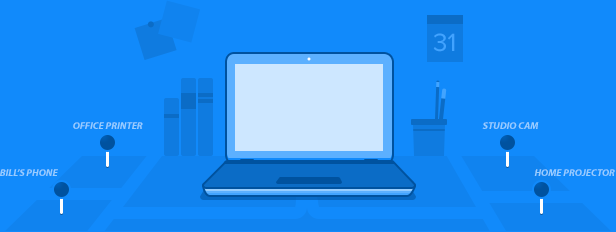There is no com port section in the device manager. Pulmonary data service instrumentation usb devices driver download. I have updated drivers, tried different connectors etc. I did the command prompt method on both machines and there simply are no com ports. The device shows up as a mass storage device under the USB section. I cant get either machine (win 10 or 8.1) to recognize it as a com port. Under Other devices, right-click the Unknown device and click Update Driver Software. Zenith driver download. The same port, and then double-click Update.exe from the Firmware.
PortTalk Windows NT I/O Port Device Driver 2.2
A problem that plagues Windows NT/2000 and Windows XP, is it's strict control over I/O ports. Unlike Windows 95 & 98, Windows NT/2000/XP will cause an exception (Privileged Instruction) if an attempt is made to access a port that you are not privileged to talk too. Actually it's not Windows NT that does this, but any 386 or higher processor running in protected mode.
Accessing I/O Ports in protected mode is governed by two events, The I/O privilege level (IOPL) in the EFLAGS register and the I/O permission bit map of a Task State Segment (TSS). Under Windows NT, there are only two I/O privilege levels used, level 0 & level 3. Usermode programs will run in privilege level 3, while device drivers and the kernel will run in privilege level 0, commonly referred to as ring 0. This allows the trusted operating system and drivers running in kernel mode to access the ports, while preventing less trusted usermode processes from touching the I/O ports and causing conflicts. All usermode programs should talk to a device driver which arbitrates access. The I/O permission bitmap can be used to allow programs not privileged enough (I.e. usermode programs) the ability to access the I/O ports. When an I/O instruction is executed, the processor will first check if the task is privileged enough to access the ports. Should this be the case, the I/O instruction will be executed. However if the task is not allowed to do I/O, the processor will then check the I/O permission bitmap.
The I/O permission bitmap, as the name suggests uses a single bit to represent each I/O address. If the bit corresponding to a port is set, then the instruction will generate an exception however if the bit is clear then the I/O operation will proceed. This gives a means to allow certain processes to access certain ports. There is one I/O permission bitmap per task.
Revision History
6th April 2002 - Version 2.2.
Fixed a debug message typo in the IoExample.
13th January 2002 - Version 2.1, tested on Windows 2000 SP2 and Windows XP RTM.
Added uninstall.exe to deal with older V1.x versions of PortTalk.
12th January 2002 – Version 2.0, tested on Windows 2000 SP2 and Windows XP RTM.
Self installs driver for ease of use.
Improved type checking.
Distributed with IoExample code showing use of inportb/outportb() inp/outp() macros and IOCTL calls.
6th September 2001 – Version 1.02
Fixed .reg file after previous fix broke Windows 2000 Support. Now supports Windows NT/2000/XP.
26th June 2001 – Version 1.01
Fixed .reg file to support both Windows 2000 and Windows NT4.
13th March 1999 – Version 1.0 first public release for Windows NT4.
When installing PortTalk V2.x on machines with an older version of V1.x, the existing driver must be un-installed. Simply run the uninstall.exe contained within the PortTalk package with administrator privileges. After the old driver has been removed, running allowio.exe or IoExample.exe will detect the absence of PortTalk and re-install the new driver.
Additionally, the driver can be removed manually. This is only recommended for advanced users. Either
-Replace your old porttalk.sys with the new version and reboot.
-Delete the HKEY_LOCAL_MACHINEsystemcurrentcontrolsetservicesporttalk key and reboot.
-Use the Windows NT Device Driver Installer to stop and remove the PortTalk Driver.
Примечание: Ссылка 'скачать' может вести как непосредственно на файл, так и на сайт производителя, на котором Вы можете найти нужный файл.
Это связано с тем, что некоторые производители не позволяют размещать прямые ссылки на файлы.
Accessing I/O Ports in protected mode is governed by two events, The I/O privilege level (IOPL) in the EFLAGS register and the I/O permission bit map of a Task State Segment (TSS). Under Windows NT, there are only two I/O privilege levels used, level 0 & level 3. Usermode programs will run in privilege level 3, while device drivers and the kernel will run in privilege level 0, commonly referred to as ring 0. This allows the trusted operating system and drivers running in kernel mode to access the ports, while preventing less trusted usermode processes from touching the I/O ports and causing conflicts. All usermode programs should talk to a device driver which arbitrates access. The I/O permission bitmap can be used to allow programs not privileged enough (I.e. usermode programs) the ability to access the I/O ports. When an I/O instruction is executed, the processor will first check if the task is privileged enough to access the ports. Should this be the case, the I/O instruction will be executed. However if the task is not allowed to do I/O, the processor will then check the I/O permission bitmap.
The I/O permission bitmap, as the name suggests uses a single bit to represent each I/O address. If the bit corresponding to a port is set, then the instruction will generate an exception however if the bit is clear then the I/O operation will proceed. This gives a means to allow certain processes to access certain ports. There is one I/O permission bitmap per task.
Revision History
6th April 2002 - Version 2.2.
Fixed a debug message typo in the IoExample.
13th January 2002 - Version 2.1, tested on Windows 2000 SP2 and Windows XP RTM.
Added uninstall.exe to deal with older V1.x versions of PortTalk.
12th January 2002 – Version 2.0, tested on Windows 2000 SP2 and Windows XP RTM.
Self installs driver for ease of use.
Improved type checking.
Distributed with IoExample code showing use of inportb/outportb() inp/outp() macros and IOCTL calls.
6th September 2001 – Version 1.02
Fixed .reg file after previous fix broke Windows 2000 Support. Now supports Windows NT/2000/XP.
26th June 2001 – Version 1.01
Fixed .reg file to support both Windows 2000 and Windows NT4.
13th March 1999 – Version 1.0 first public release for Windows NT4.
When installing PortTalk V2.x on machines with an older version of V1.x, the existing driver must be un-installed. Simply run the uninstall.exe contained within the PortTalk package with administrator privileges. After the old driver has been removed, running allowio.exe or IoExample.exe will detect the absence of PortTalk and re-install the new driver.
Additionally, the driver can be removed manually. This is only recommended for advanced users. Either
-Replace your old porttalk.sys with the new version and reboot.
-Delete the HKEY_LOCAL_MACHINEsystemcurrentcontrolsetservicesporttalk key and reboot.
-Use the Windows NT Device Driver Installer to stop and remove the PortTalk Driver.
Примечание: Ссылка 'скачать' может вести как непосредственно на файл, так и на сайт производителя, на котором Вы можете найти нужный файл.
Это связано с тем, что некоторые производители не позволяют размещать прямые ссылки на файлы.

Рейтинг за сегодня:: |
Device Drivers
Witawas Srisa-an
Embedded Systems Design and Implementation
Device Drivers
What are device drivers?
- What are they used for?
- Why are they important?
Why Do We Need Drivers?
Custom platforms
- Contain many peripheral devices and kernel (e.g. CE) supported CPU
- OAL development to get kernel to boot on the board
- Device drivers to allow applications to access peripheral devices
Drivers Zemo Port Devices Free
An Example
Drivers Zemo Port Devices For Sale
To access a serial port in Windows CE
- calls CreateFile( ) on COMx
- calls WriteFile( ) to write some bytes of data to the serial port
- calls CloseHandle( ) to close the serial port.

Drivers in CE
A driver is simply a dynamic-link library (DLL)
- DLLs are loaded into a parent process address space
- Run in user mode (different than most OSs)
- the parent process can then call any of the interfaces exposed from the DLL
- LoadLibrary( )
- LoadDriver( ) --- memory resident
Writing Device Drivers
Most of the time spent on system integration is in this process
- Some devices have support on standard CE release and some don’t
- Onboard or installable
- Onboard devices may require platform dependent modification to the kernel image
- Installable devices may require code to be more platform independent
- Drivers APIs can also be used to provide application-level services
Drivers Zemo Port Devices List
Device Driver Models

Device drivers, over the years, have become very complex
- Drivers are separated into classes
- Serial, network, audio, video, touch panel, etc.
- Layer approach is used
- To support a new device, a layer is modified instead of rewriting the entire driver
- Processing functions required for a given class often do not require modification
Device Driver Architecture
Stream-Interface
Allow accesses to an array of devices through basic file I/O interfaces
- Often used for installable devices
- The device manager (DM) manages stream-interface drivers
- DM operates as its own process
- Device driver DLLs are mapped into the address space

Other Driver Models
Native Interface
USB Interface
Network Device Interface Specification
Device Driver Labs
http://www.microsoft.com/downloads/details.aspx?FamilyID=486E8250-D311-4F67-9FB3-23E8B8944F3E&displaylang=en
Download lab tools from the course website
Create a simple Internet Appliance Windows CE project
Create a device driver workspace and build the workspace
Build OS image
Attach the device
Open prompt through build OS | Open Release Directory
- dumpbin –exports StreamDrv.dll
Drivers Zemo Port Devices Download
Dostları ilə paylaş:
